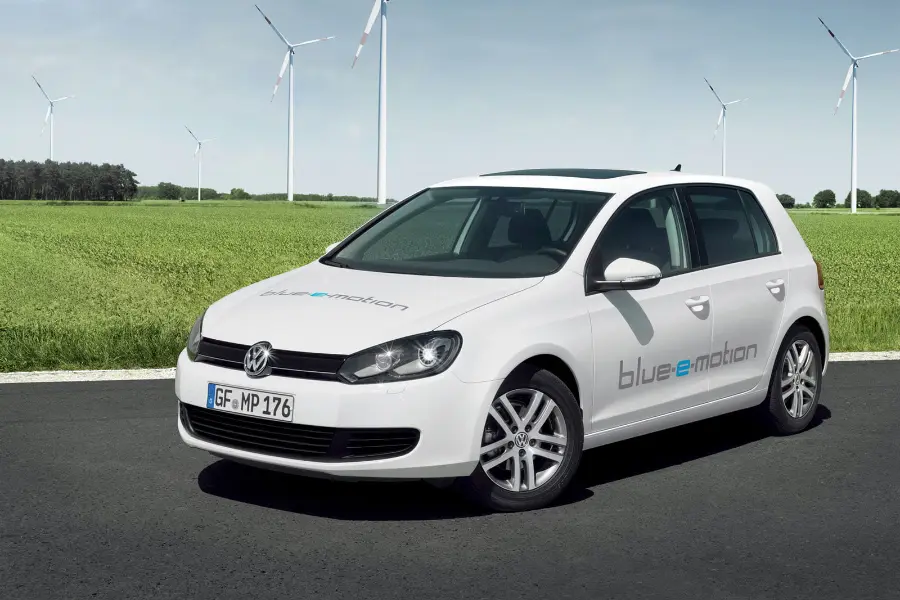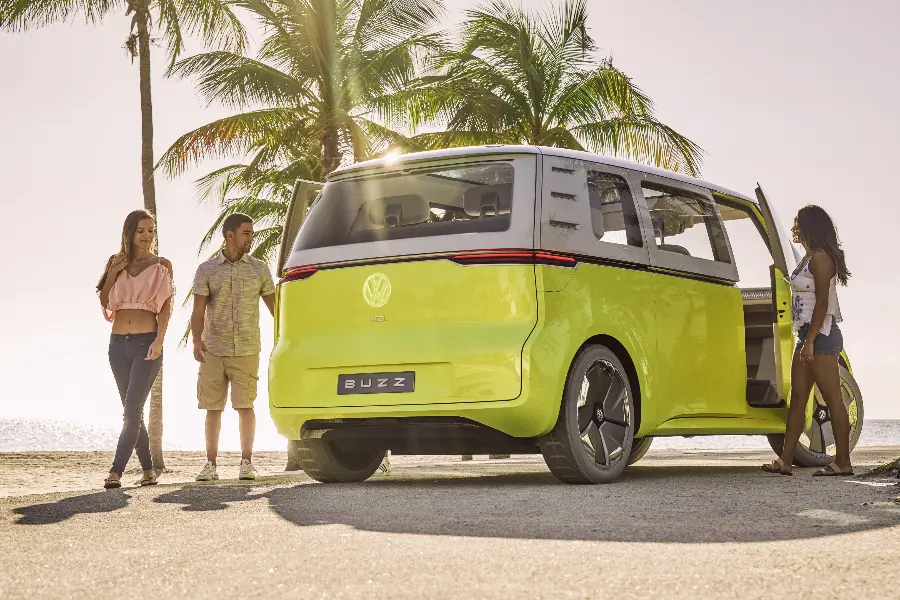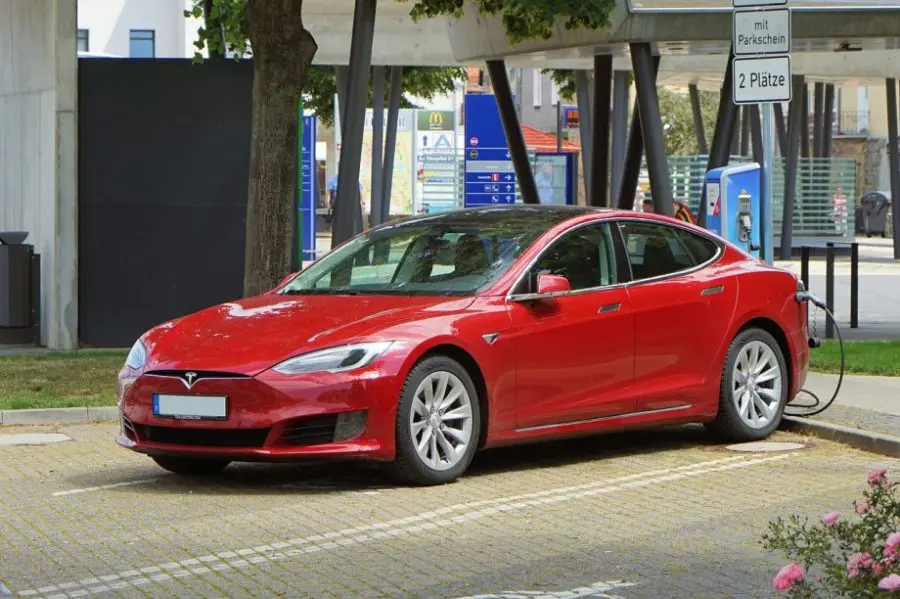
Get the lowdown on understanding the basics of electric vehicles. Dive into types, benefits, challenges, and future trends in our easy-to-follow guide.
Ever wondered what’s under the hood of that quiet, sleek electric car zooming past you? Well, you’re in the right place!
Our journey into understanding the basics of electric vehicles starts here.
We’re going to delve into the heart of these innovative machines, exploring their types, how they work, and why they’re becoming the talk of the town.
So buckle up, and let’s hit the road to a greener future together!
Understanding the Basics of Electric Vehicles
Welcome aboard! If you’ve ever been curious about those sleek, silent cars that are increasingly appearing on our roads, you’ve come to the right place.
In this post, we’re going to demystify electric vehicles, breaking down the jargon and getting to the heart of what makes them tick.
From exploring the different types of electric vehicles to understanding how they work, their benefits, and even the challenges they face, we’ve got it all covered.
We’ll also delve into their safety features, maintenance needs, and what the future holds for them.
So, let’s embark on this electrifying journey of understanding the basics of electric vehicles together!
Brief Overview of Electric Vehicles
Electric vehicles, or EVs as they’re often called, are a breath of fresh air in the world of transportation.
Unlike their gas-guzzling counterparts, EVs run on electricity. You might be thinking, That’s great, but what does it really mean?
Well, imagine a car that doesn’t need a drop of gasoline, doesn’t emit any tailpipe pollutants, and can be charged right at home.
Sounds pretty neat, right? That’s an electric vehicle for you! They come in all shapes and sizes, from compact two-seaters to roomy SUVs, and even sports cars.
So, whether you’re a solo commuter or a family of five, there’s an EV out there for you.
Importance of Understanding Electric Vehicles
Now, you might be wondering, Why should I bother understanding the basics of electric vehicles? It’s a fair question.
Here’s the thing, EVs are more than just a trend, they’re the future of transportation.
As we grapple with climate change and seek sustainable alternatives, electric vehicles offer a promising solution.
But to make informed decisions whether you’re considering buying an EV, or just want to stay updated on green technologies, understanding how they work, their benefits, and challenges is crucial.
Plus, who doesn’t love learning about cool, innovative tech? So, let’s dive in and get to know these electric marvels better!
What is an Electric Vehicle?

Alright, let’s get down to business. What exactly is an electric vehicle? You might have heard different terms thrown around like EV, BEV, PHEV and it can get a bit confusing.
But don’t worry, we’re here to clear things up. In the simplest terms, an electric vehicle is a car that uses electricity, instead of gasoline or diesel, to power its engine.
But there’s a lot more to it than that, and we’re going to explore it all. From the history of electric vehicles to their different types, we’re about to embark on a fascinating journey.
So, let’s hit the accelerator and dive right in!
Definition of an Electric Vehicle
So, let’s start with the basics. An electric vehicle, often referred to as an EV, is a vehicle that uses one or more electric motors for propulsion.
Unlike traditional vehicles that use a gasoline or diesel-powered engine, electric vehicles use electricity as their fuel.
This electricity is stored in a battery pack, which powers the electric motor and turns the wheels.
When the battery runs low, you don’t fill up at a gas station. Instead, you recharge it, just like your smartphone.
The beauty of this is that you can often refuel your EV in the comfort of your own home.
Brief History of Electric Vehicles
Now, you might be surprised to learn that electric vehicles aren’t a new phenomenon.
In fact, they’ve been around for over a century! In the late 1800s and early 1900s, electric vehicles were quite popular.
They were quiet, easy to drive, and didn’t emit smelly pollutants like their gasoline engine counterparts.
However, with the advent of the cheaper cost of gasoline-powered vehicles, and the need for longer ranges, gasoline cars took over.
Fast forward to the late 20th and early 21st century, concerns over pollution and the environment, coupled with advancements in battery technology, have brought electric vehicles back into the spotlight.
Today, with companies like Tesla leading the charge, EVs are experiencing a resurgence and are more popular than ever.
And with continuous improvements in technology and infrastructure, it looks like they’re here to stay.
Types of Electric Vehicles

Okay, now that we’ve covered what an electric vehicle is and taken a quick trip down memory lane, let’s delve into the different types of EVs.
You see, not all electric vehicles are created equal. Some run solely on electricity, while others combine electric power with traditional combustion engines.
Confused? Don’t be! We’re about to break it all down and make sense of these different types.
Whether you’re considering buying an EV or just want to expand your knowledge, understanding these distinctions is key.
So, let’s shift gears and explore the diverse world of electric vehicles!
Battery Electric Vehicles (BEVs)
First up, we have Battery Electric Vehicles or BEVs. These are the purest form of electric vehicles because they run entirely on electricity.
There’s no internal combustion engine in sight! Instead, they have a battery (hence the name) that powers an electric motor.
You charge the battery by plugging the vehicle into an external power source.
When you hit the road, you’re driving emission-free, which is fantastic for the environment.
Plus, because they’re all-electric, BEVs are incredibly quiet so no more noisy engines!
Plug-in Hybrid Electric Vehicles (PHEVs)
Next, we have Plug-in Hybrid Electric Vehicles or PHEVs. These are a bit of a hybrid between BEVs and traditional vehicles.
They have a battery and an electric motor, just like BEVs. But they also have a conventional internal combustion engine.
This means you can drive short distances on electric power alone, and for longer trips, the gasoline engine kicks in.
The great thing about PHEVs is that you can plug them in to charge the battery, just like a BEV, giving you the flexibility to drive on electric power as much as possible.
Hybrid Electric Vehicles (HEVs)
Next, we have Hybrid Electric Vehicles or HEVs. These are similar to PHEVs in that they have both a gasoline engine and an electric motor.
The difference is, you can’t plug in an HEV to charge the battery. Instead, the battery is charged through regenerative braking and by the internal combustion engine.
While they can’t drive on electric power alone like BEVs or PHEVs, HEVs are still more fuel-efficient than traditional vehicles, making them a great choice for those looking to reduce their carbon footprint.
Fuel Cell Electric Vehicles (FCEVs)
Fuel Cell Electric Vehicles (FCEVs) represent another type of electric vehicle that’s gaining attention.
Unlike BEVs and PHEVs, FCEVs generate electricity using a fuel cell powered by hydrogen, rather than storing and releasing electricity directly from a battery.
The fuel cell combines hydrogen and oxygen to produce electricity, which then powers an electric motor.
The only byproduct of this process is water, making FCEVs incredibly clean.
While the infrastructure for hydrogen refueling is still developing, the potential for long-range and fast refueling makes FCEVs an exciting area of electric vehicle technology.
In addition to electric cars, we need to talk about E-bikes and electric scooters and we will cover that in the next section.
Exploring the World of Electric Bikes and Scooters: Eco-Friendly and Efficient Mobility
In today’s fast-paced world, finding sustainable and efficient modes of transportation is more important than ever.
Enter electric bikes and scooters, the two-wheeled wonders that are revolutionizing urban mobility.
With their electric motors and eco-friendly nature, these vehicles offer a convenient, cost-effective, and environmentally conscious way to navigate busy streets.
In this section, we’ll take a closer look at electric bikes and scooters, highlighting their benefits, types, and why they’re gaining popularity worldwide.
Benefits of Electric Bikes and Scooters
Eco-Friendly Commuting: Electric bikes and scooters produce zero emissions, helping to reduce air pollution and combat climate change.
Cost-Effective Transportation: With low operational costs and minimal maintenance requirements, electric bikes and scooters offer significant savings compared to traditional vehicles.
Efficient Urban Mobility: Maneuvering through traffic and finding parking becomes a breeze with the agility and compactness of electric bikes and scooters.
Types of Electric Bikes and Scooters
Electric Bikes: Explore the various types of electric bikes available, including pedal-assist bikes (e-bikes) and electric mountain bikes (e-MTBs), each designed for different terrains and riding preferences.
Electric Scooters: Discover the diverse range of electric scooters, from compact and lightweight models for urban commuting to powerful electric scooters suitable for longer distances.
Key Features and Considerations
Battery Capacity and Range: Learn about the importance of battery capacity and how it affects the range of electric bikes and scooters, allowing you to plan your rides accordingly.
Speed and Power: Understand the different speed and power options available, ensuring that you choose an electric bike or scooter that aligns with your desired riding experience.
Safety Features: Explore the safety features offered by electric bikes and scooters, such as headlights, taillights, disc brakes, and suspension systems, that enhance rider safety on the road.
Riding Etiquette and Regulations
Understanding Local Laws: Familiarize yourself with local regulations regarding the use of electric bikes and scooters, including age restrictions, speed limits, and where they are permitted to ride.
Sharing the Road: Discover the importance of practicing safe and considerate riding, including wearing protective gear, respecting pedestrians, and obeying traffic rules.
Final Thoughts On Electric Bikes and Scooters
Electric bikes and scooters are revolutionizing urban transportation, offering an eco-friendly and efficient alternative to traditional vehicles.
With their numerous benefits, versatile options, and growing popularity, they provide an exciting opportunity to embrace sustainable mobility.
By understanding the different types, key features, and riding etiquette, you can confidently join the electric bike and scooter revolution, enjoying the freedom of emission-free transportation while reducing your carbon footprint.
So, hop on, embrace the thrill of electric-powered mobility, and embark on a greener journey toward a sustainable future.

How Do Electric Vehicles Work?
Alright, we’ve covered what an electric vehicle is and explored the different types.
But you might be wondering, how do these high-tech machines actually work?
How does a car run on electricity instead of gasoline? Well, buckle up, because we’re about to take a deep dive into the inner workings of electric vehicles.
From the role of the battery to the function of the electric motor and the process of charging, we’re going to demystify it all.
So, let’s put our learning caps on and get ready to explore the fascinating mechanics of electric vehicles!
The Role of the Battery
Think of the battery in an electric vehicle as its heart. It’s the source of power that keeps everything running.
In an EV, the battery is used to store the electricity that powers the motor.
The larger the battery capacity, the longer the vehicle can run on a single charge.
But it’s not just about size. The type of battery also matters.
Most modern EVs use lithium-ion batteries because they have a high energy density, are lighter than other battery types, and can retain their charge efficiency over many cycles.
The Function of the Electric Motor
Now, onto the electric motor, the muscle of an electric vehicle. The motor’s job is to convert electrical energy from the battery into mechanical energy to turn the wheels.
When you press the accelerator, the motor receives electricity from the battery and uses it to create motion.
One cool thing about electric motors is that they provide instant torque, which means you get smooth and rapid acceleration right from a stop.
The Process of Charging
Finally, let’s talk about charging. Charging an electric vehicle is a bit like charging your smartphone.
You plug it into a power source, and electricity is transferred into the battery.
There are different levels of charging, from plugging into a standard electrical outlet at home (which can take quite a while) to using a dedicated home charging unit or a public fast-charging station (which can charge the battery much faster).
The charging speed depends on the power of the charging unit and the vehicle’s onboard charger.
Once the battery is fully charged, you’re good to go! We will cover types of chargers next.
Charging Electric Cars: Powering Up for the Road Ahead
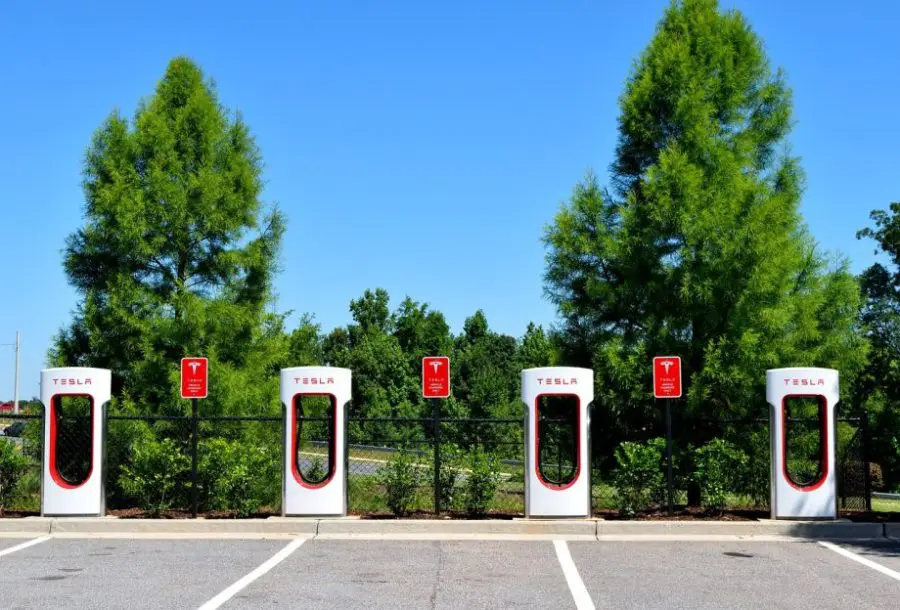
One of the key considerations for electric vehicle (EV) owners is charging their cars.
Charging an electric car is not only essential but also an opportunity to optimize your driving experience.
In this section, we’ll explore the ins and outs of EV charging, from the different types of chargers to the concept of a full charge. So, let’s plug in and power up!
Types of Chargers
When it comes to charging your EV, there are a few types of chargers to be aware of.
First, we have Level 1 chargers, which typically come with the vehicle and can be plugged into a standard household outlet.
While Level 1 chargers are convenient for overnight charging, they are relatively slow and may take several hours or even overnight to reach a full charge.
For faster charging, Level 2 chargers are the way to go. These chargers require a dedicated charging unit and are usually installed at home or in public charging stations.
Level 2 chargers provide a higher voltage and amperage, allowing for a quicker charge.
With a Level 2 charger, you can typically achieve a full charge in a matter of a few hours.
Fast Chargers for On-the-Go
When you’re out and about and need a quick charge, fast chargers come to the rescue.
Fast chargers, also known as DC fast chargers or Level 3 chargers, provide high-voltage DC power directly to the vehicle’s battery.
This results in significantly faster charging times compared to Level 1 or Level 2 chargers.
In a matter of 30 minutes or less, fast chargers can provide a substantial charge, allowing you to continue your journey with minimal downtime.
Slow Chargers for Convenient Top-Ups
In addition to Level 1 and Level 2 chargers, there are also slow chargers available for specific scenarios.
These chargers are often found in public areas where longer-term parking is expected, such as workplaces or shopping centers.
Slow chargers provide a lower charging rate but are ideal for topping up your EV while you go about your daily activities.
They may not deliver a full charge within a short period, but they offer a convenient and hassle-free option for extending your driving range.
Striving for a Full Charge
Achieving a full charge is the goal for many EV owners, as it maximizes their driving range.
A full charge means that the battery is charged to its maximum capacity, allowing you to get the most out of your electric vehicle.
However, it’s essential to note that charging 100% is not always necessary for day-to-day driving.
In fact, many EV owners opt for partial charges, such as reaching 80% or 90% capacity, which is sufficient for their daily needs while also extending the overall lifespan of the battery.
In conclusion, EV charging is a crucial aspect of owning and operating an electric vehicle.
Understanding the different types of chargers available, including Level 1, Level 2, and fast chargers, can help you plan and optimize your charging routine.
Whether you’re charging overnight at home or seeking a quick boost at a fast charging station, the ability to conveniently and efficiently charge your EV is key to unlocking the full potential of emission-free driving.
So, embrace the charging infrastructure and embark on a journey of electric mobility!
Benefits of Electric Vehicles
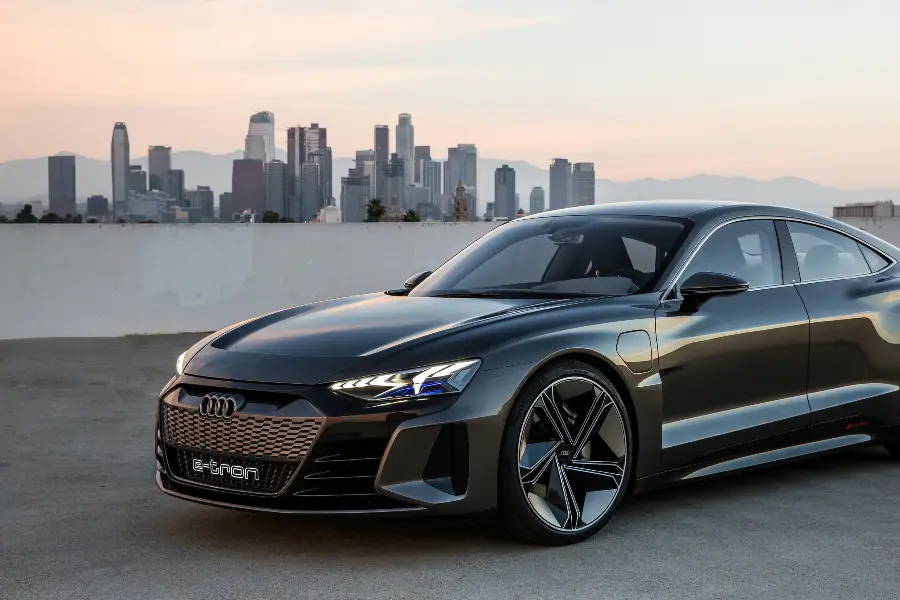
By now, you’re getting a pretty good idea of what electric vehicles are and how they work.
But why are they becoming so popular? What makes them a good choice for drivers and the environment?
Well, as it turns out, electric vehicles come with a host of benefits. From their environmental impact to their economic advantages and energy efficiency, EVs have a lot to offer.
So, let’s shift into high gear and explore why going electric could be one of the best decisions you’ll make for your wallet, your driving experience, and our planet!
Environmental Benefits
One of the biggest advantages of electric vehicles is their positive impact on the environment.
Since EVs run on electricity, they emit zero tailpipe pollutants. This means cleaner air and less contribution to smog and climate change.
Plus, as more of our electricity comes from renewable sources like wind and solar, the environmental benefits of EVs will only increase.
So, by driving an EV, you’re not just saving money on fuel – you’re also doing your part to protect our planet!
Economic Benefits
Next up, let’s talk about the economic benefits. Yes, electric vehicles can have a higher upfront cost than traditional cars.
But when you look at the total cost of ownership, things start to look a lot different.
Electricity is generally cheaper than gasoline, so you’ll spend less on fuel.
Plus, EVs have fewer moving parts than conventional cars, which means less maintenance and fewer repairs.
And don’t forget about government incentives! Many countries offer tax credits or rebates for buying an EV, which can help offset the initial cost.
Energy Efficiency
Finally, electric vehicles are incredibly energy efficient. In a conventional car, a lot of energy is wasted as heat.
But in an EV, nearly all the electrical energy from the battery is used to move the car.
This means you get more bang for your buck from each kilowatt-hour of electricity.
Plus, EVs have something called regenerative braking, which captures energy normally lost during braking and feeds it back into the battery.
All this adds up to a vehicle that’s not just efficient, but also fun to drive, with smooth acceleration and responsive handling.
Challenges and Solutions

While electric vehicles offer numerous benefits, they’re not without their challenges.
From range anxiety to infrastructure needs and upfront costs, there are hurdles to overcome.
But don’t let that deter you! For every challenge, there’s a solution being developed or already in place.
In this section, we’re going to tackle these issues head-on, exploring the obstacles that EVs face and the innovative ways in which industry and governments are working to address them.
So, let’s dive in and shed some light on the challenges and solutions in the world of electric vehicles!
Range Anxiety and Battery Life
One common concern with electric vehicles is range anxiety. That’s the fear that the battery will run out before reaching your destination or a charging station.
While it’s true that EVs can’t go as far on a single charge as gas-powered cars can on a full tank, battery power technology is improving rapidly.
Today’s EVs offer ranges that are more than sufficient for most daily driving needs.
Plus, features like regenerative braking help maximize battery life. And let’s not forget, the average daily commute is well within the range of most modern EVs.
Charging Infrastructure
Another challenge is the availability of charging infrastructure. While it’s possible to charge an EV at home, public charging stations are essential for longer trips.
The good news is, the number of public charging stations is growing every day.
In recent years governments and private companies have begun investing heavily in charging infrastructure, making it easier and more convenient to charge on the go.
There are even apps to help you locate the nearest charging station!
Vehicle Cost and Affordability
Finally, let’s talk about cost. It’s no secret that electric vehicles can be more expensive upfront than their gasoline counterparts.
However, it’s important to consider the total cost of ownership. Yes, the purchase price might be higher, but you’ll save on fuel and maintenance over the life of the vehicle.
Plus, many governments offer incentives like tax credits or rebates to help offset the initial cost.
And as battery technology improves and economies of scale kick in, the purchase price of EVs is expected to come down.
So, while affordability can be a challenge, it’s one that’s likely to lessen over time.
Safety and Maintenance of Electric Vehicles
Electric vehicles aren’t just about being green and cost-effective – they’re also about safety and ease of maintenance.
You might be wondering, Are EVs safe? or How much work goes into maintaining an electric vehicle? Well, you’re in for some good news!
In this section, we’re going to explore the safety features that make EVs a great choice for drivers and passengers alike.
We’ll also delve into the maintenance requirements of EVs, which might just surprise you.
So, let’s get started and uncover another side of electric vehicles that makes them an even more attractive choice!
Safety Features of Electric Vehicles
When it comes to safety, electric vehicles are designed with a host of features to protect drivers and passengers.
For starters, the battery’s location in the vehicle lowers the center of gravity, which reduces the risk of rollovers.
Plus, without a bulky engine, EVs have more room for effective crumple zones to absorb impact in the event of a collision.
Electric vehicles also have unique safety features related to their electric systems.
For instance, in the event of a crash, many EVs are designed to automatically cut off power, reducing the risk of electrical fires.
And let’s not forget about the benefits of a quieter ride. Less noise means less distraction for the driver!
Maintenance Requirements
Now, let’s talk about maintenance. One of the great things about electric vehicles is that they require less maintenance than conventional cars.
Without an internal combustion engine, there’s no need for oil changes, spark plug replacements, or other common engine-related maintenance.
That said, EVs do have their own maintenance needs. The battery, for instance, may need to be replaced after a certain number of years, although many manufacturers offer lengthy warranties on their batteries.
Regular checks on the electric motor, brakes, tires, and other components are also important.
But overall, you’ll likely find that maintaining an EV is simpler and less frequent than maintaining gas-powered vehicles.
So, you can spend less time at the mechanic and more time enjoying the open road!
The Future of Electric Vehicles

As we’ve seen, electric vehicles have come a long way. But what does the future hold for these innovative machines?
With rapid advancements in technology and a growing commitment to sustainability worldwide, the future of EVs looks brighter than ever.
In this section, we’re going to explore what’s on the horizon for electric vehicles.
From technological advancements to policy and market trends, we’ll take a glimpse into a future where EVs could become the norm rather than the exception.
So, let’s fasten our seatbelts and set off on a journey into the exciting future of electric vehicles!
Technological Advancements
The world of electric vehicles is one of constant innovation. Technological advancements are making EVs more efficient, more convenient, and more affordable.
One of the most exciting areas of development is in battery technology.
Researchers are working on new types of batteries that can store more energy, charge faster, and last longer.
But it’s not just about the batteries. Innovations in electric motor technology are making EVs even more efficient and powerful.
And let’s not forget about charging infrastructure. Advances in fast-charging technology are reducing charging times, making EVs more convenient for long-distance travel.
Policy and Market Trends
On the policy front, governments around the world are increasingly recognizing the importance of electric vehicles in achieving environmental goals.
Many are offering incentives to encourage consumers to buy EVs, and some are even setting deadlines for ending the sale of new gasoline and diesel cars.
In terms of market trends, consumer interest in EVs is growing rapidly.
As more people recognize the benefits of electric vehicles, from the environmental impact to the cost savings the demand is rising.
At the same time, more and more automakers are committing to electric.
Some have announced plans to go fully electric in the coming years, and nearly all are expanding their range of EV models.
All of these trends point to a future where electric vehicles are not just an alternative, but the mainstream choice for personal transportation. It’s an exciting time to be part of the electric revolution!
Understanding the Basics of Electric Vehicles FAQs
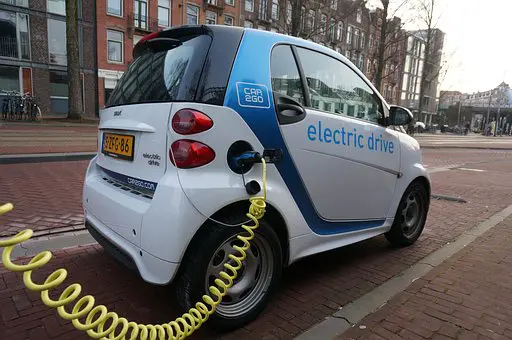
By now, we’ve covered a lot of ground on our electric vehicle journey. But you might still have a few questions lingering in your mind. Don’t worry, you’re not alone!
In this section, we’re going to tackle some of the most frequently asked questions about electric vehicles.
From the basics to the specifics, we’ve got you covered. So, let’s dive into these FAQs and clear up any remaining mysteries about the world of electric vehicles!
Q: What are the basics of EV vehicles?
A: Electric Vehicles (EVs) are vehicles that run on electricity instead of gasoline.
They have a battery that stores electricity, an electric motor that uses this electricity to create motion, and a controller that manages the power flow.
You charge an EV by plugging it into an external power source. EVs produce zero tailpipe emissions, making them a more environmentally friendly choice than traditional vehicles.
Q: What are the 4 types of electric vehicles?
A: There are four main types of electric vehicles:
Battery Electric Vehicles (BEVs): These are fully electric vehicles with rechargeable batteries and no gasoline engine.
Plug-in Hybrid Electric Vehicles (PHEVs): These vehicles have a battery and an electric motor, as well as a gasoline engine. They can be plugged in to charge the battery.
Hybrid Electric Vehicles (HEVs): These vehicles also have a battery and an electric motor, as well as a gasoline engine. However, they can’t be plugged in to charge the battery – instead, the battery is charged through regenerative braking and by the engine.
Fuel Cell Electric Vehicles (FCEVs): These vehicles convert hydrogen gas into electricity to power an electric motor.
Q: How do electric cars work for dummies?
A: Electric cars work by using electricity to power a motor, which then drives the wheels.
The electricity is stored in a large battery, which you charge up by plugging the car into a power source.
When you drive, the battery sends electricity to the motor, which turns it into mechanical energy to move the car.
When the battery gets low, you just recharge it, much like you would with a cell phone. It’s as simple as that!
Understanding the Basics of Electric Vehicles Conclusion
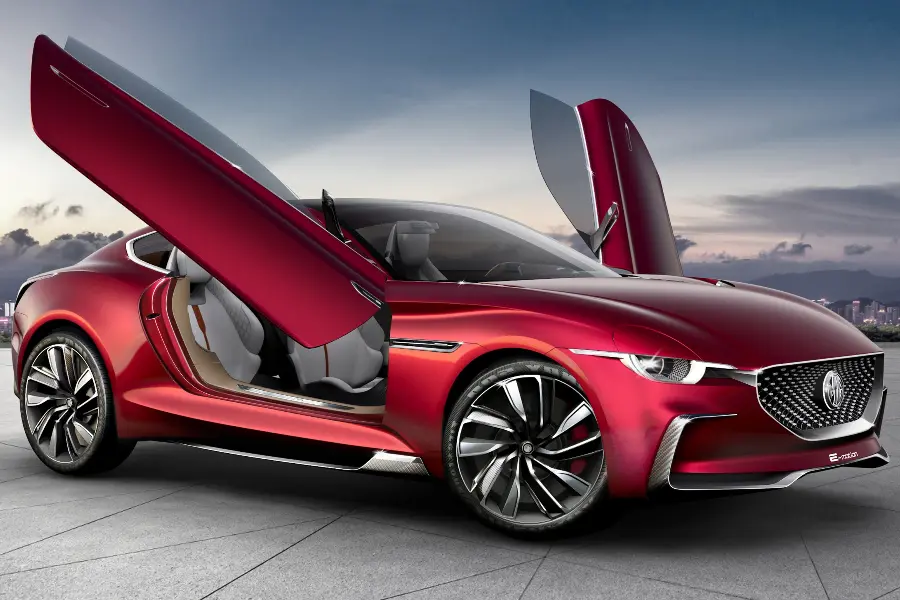
We’ve come a long way on our journey into the world of electric vehicles.
From understanding what they are and how they work to exploring their benefits, challenges, and the exciting future ahead, we’ve covered a lot of ground.
But as we wrap up, it’s important to take a moment to reflect on what we’ve learned and why it matters.
So, let’s bring it all together and draw some final thoughts on the importance of understanding the basics of electric vehicles.
Whether you’re considering making the switch to electric or simply curious about this innovative technology, this conclusion is for you!
Recap of Key Points
We started our journey by defining what an electric vehicle is, a vehicle that uses electricity, stored in a battery, to power an electric motor.
We explored the different types of EVs, including Battery Electric Vehicles (BEVs), Plug-in Hybrid Electric Vehicles (PHEVs), and Hybrid Electric Vehicles (HEVs), each with its own unique features and benefits.
We delved into how EVs work, highlighting the role of the battery, the function of the electric motor, and the process of charging.
We also discussed the numerous benefits of EVs, from their environmental impact to their economic advantages and energy efficiency.
We didn’t shy away from the challenges, discussing range anxiety, charging infrastructure, and vehicle cost.
But we also highlighted the solutions and advancements that are addressing these issues.
We touched on the safety features of EVs and their maintenance requirements, before looking ahead to the promising future of electric vehicles.
Final Thoughts on the Importance of Understanding Electric Vehicles
Understanding the basics of electric vehicles is more than just learning about a new technology.
It’s about recognizing the shift in our approach to transportation and our relationship with the environment.
As we grapple with climate change and seek sustainable alternatives, electric vehicles offer a promising solution.
Whether you’re considering buying an EV, or just want to stay updated on green technologies, having a solid understanding of electric vehicles is invaluable.
It allows you to make informed decisions and be part of the conversation on our sustainable future.
After all, electric vehicles are more than just a trend. They’re a key part of our journey toward a greener and more sustainable world.




